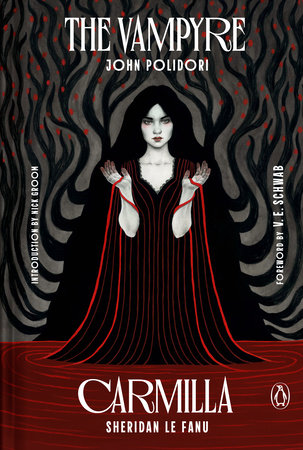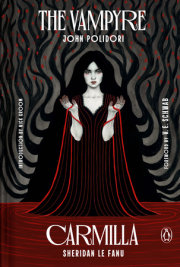The first vampire short story and novella, which came before Dracula, together in one Penguin Classics hardcover, a Penguin Speculative Fiction Special, with a foreword by #1 New York Times–bestselling author V. E. Schwab
A Penguin Classic Hardcover
The first vampire short story in English, The Vampyre by John Polidori, and the first vampire novella, Carmilla by Joseph Sheridan Le Fanu, are published together in one volume. The Vampyre, first published in 1819, features Lord Ruthven, a deathly pale yet fatally charismatic nobleman who preys on women of high society and is generally considered as the first fully developed vampire narrative in English literature. It is here accompanied by Alaric Watts’s introduction, with which it was published throughout the nineteenth century, and which contains important supplementary material on vampire beliefs. Carmilla (1871–2) by Joseph Sheridan Le Fanu is a nineteenth-century Gothic novella featuring a protagonist who typifies the long line of female and lesbian vampires in literature, movies, television series, and artwork. In a castle deep in the Austrian forest, Laura, a young woman, leads an isolated life with her father. A horse-drawn carriage crashes and an unexpected guest, the mysterious and seductive Carmilla, enters their lives. An early, sophisticated, and influential vampire novel, Carmilla predates Bram Stoker’s Dracula by twenty-five years and the film Nosferatu by fifty.
Penguin Speculative Fiction Special is a hardcover series of horror, science fiction, fantasy, and more published by Penguin Classics. Featuring custom endpapers, specially commissioned cover art, and introductions by scholars and notable figures, these collectible editions celebrate classics that invite us to ask, “What if?” and that, through bold imagination, alternative visions, and magical realms, transform our perception of our world.






